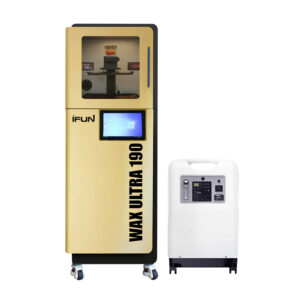In jewelry design, the application of 3D printing filament breaks through the limitations of traditional craftsmanship. The selection of 3D printer consumables has become a key factor affecting the texture, functionality, and market positioning of jewelry products. The “Exploring the Application of 3D Printer Consumables in Jewelry Design” series will analyze four common types of 3D printing filament: nylon, ABS, transparent materials, and flexible materials. Combining the characteristics, advantages, limitations, and application scenarios of each printing material, it explores their comprehensive performance in jewelry printing, so that jewelry designers can accurately select the most suitable 3D printing filament according to different design needs, target customer groups, and budget constraints, and create jewelry works that meet both artistic aesthetic requirements and market competitiveness.
This article describes the advantages and disadvantages of nylon 3D printer filament and their application scenarios in jewelry design.

Advantages of Using Nylon 3D Printer Filament in Jewelry Design
High Strength and Wear Resistance
Nylon is renowned for its high tensile strength and wear resistance, making it an ideal choice for components like chains, clasps, and intricate connectors. When you use a nylon filament 3d printer, you ensure that your jewelry pieces are both durable and reliable. This strength is particularly crucial for items that are subject to everyday wear and mechanical stress.
Chemical Corrosion Resistance
Another significant advantage is nylon’s resistance to chemicals. Whether exposed to cosmetics, sweat, or environmental pollutants, 3d printing nylon filament retains its integrity and appearance over time. This quality makes it a practical option for jewelry that comes in regular contact with skin and other substances.
Versatile Surface Finishing
Nylon 3d printing filament offers excellent flexibility in surface finishing. Post-processing techniques such as dyeing, polishing, or applying metallic coatings can transform the matte appearance of raw nylon into a visually stunning finish. This versatility allows designers to mimic the look of precious metals or resins, providing a premium feel without the associated cost.
Lightweight and Flexible
One of the standout features of nylon 3d print filament is its lightweight and flexible nature. This characteristic makes it particularly well-suited for jewelry designs that need to conform to the natural curves of the body. Items like earrings, bracelets, and necklaces can be printed with comfort in mind, ensuring that even larger pieces remain wearable and comfortable.
Disadvantages of Using Nylon in Jewelry 3D Printing
High Moisture Absorption
Despite its many benefits, nylon has a high moisture absorption rate. When exposed to humid environments, the material can warp or experience a decline in performance. This limitation requires careful storage and handling, which may increase maintenance efforts and costs over time.
Challenging Printing Process
Printing with nylon requires precise settings, notably in terms of nylon 3d printer filament temperature. Typically, a range of 220-270°C is needed, and a heated print bed is essential. This makes the process more demanding compared to other materials, as it requires advanced 3D printers capable of handling the rigorous conditions for 3d printer nylon filament.
Surface Texture Limitations
The natural matte finish of raw nylon often necessitates additional post-processing to achieve the desired gloss or metallic luster. For designers targeting the high-end jewelry market, this extra step can add to both production time and costs, potentially limiting its direct use in luxury applications.
Key Application Areas for Nylon 3D Printer Filament in Jewelry Design
Prototyping and Design Validation
One of the most common uses of nylon 3d printer filament is in the prototyping phase. Designers can rapidly create and iterate on concept models using techniques like SLS (Selective Laser Sintering). This cost-effective method allows for quick validation of design dimensions, fit, and overall aesthetics before moving on to production.
Decorative and Lightweight Jewelry
For decorative jewelry pieces and lightweight accessories, nylon offers a balance of strength and aesthetic versatility. Items such as bracelets, pendant necklaces, and earrings can be efficiently produced using a 3d printer for nylon filament, ensuring both comfort and style. Often, these pieces undergo additional surface treatments — like dyeing or coating — to further enhance their visual appeal.
Alternative for Wax Mold Casting
In certain cases, 3d printing with nylon filament can serve as an alternative to traditional wax mold casting. Although less common, nylon molds are used in the casting process for non-precious metal jewelry. This approach is particularly useful when design precision is less critical, providing an innovative workaround in specific production scenarios.

Tips for Optimal Use of Nylon 3D Printer Filament
- Monitor Temperature Settings: Ensure that your printer maintains the recommended nylon 3d printer filament temperature range (typically 220-270°C) to prevent issues like warping.
- Invest in Quality Equipment: Using a robust 3d printer filament nylon system designed for high-temperature materials can improve overall print quality.
- Post-Processing Options: Consider various finishing techniques to enhance the natural properties of nylon, such as polishing for shine or applying metallic coatings for a premium look.
- Controlled Environment: Store printed items in a dry environment to mitigate moisture absorption, preserving the integrity of your designs.

Nylon 3D printer filament presents a compelling option for jewelry designers looking to innovate and streamline their production process. While there are challenges,such as moisture sensitivity and a demanding printing process — the advantages of high strength, flexibility, and surface versatility make it an attractive material for a range of applications. Whether you’re creating prototypes or final decorative pieces, understanding how to work with nylon can help you push the boundaries of modern jewelry design.
Embrace the potential of 3d printing nylon filament to create jewelry that not only meets artistic standards but also stands up to the rigors of daily wear, setting your creations apart in a competitive market.

